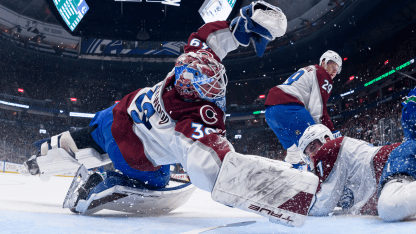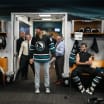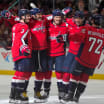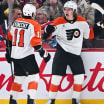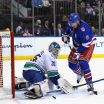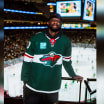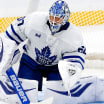VANCOUVER -- Cam Talbot works daily to improve his vision using a specialized computer program and glasses, but the Detroit Red Wings goalie knows a big part of life in an NHL crease is surviving the chaotic moments when seeing the puck feels impossible.
In those moments of mayhem, with players from each team piling up around the crease and sticks whacking at wherever the puck has ended up behind that mix of flailing limbs and fallen bodies, time can slow down for the goalie.
But not in a good way.
"In real time, it's only one or two seconds but it feels like a lifetime until you can find that puck," Talbot said. "When those scrambles are happening in front and you don't know where it is, or you've located it but can't get to it, you're just kind of a sitting duck."
It's worse when the initial shot that creates chaos doesn't make it all the way to the goalie. At least a goalie knows where a rebound is headed when the puck hits him, even if traffic in front prevents him from seeing it. When a shot hits a leg or stick in front, a goalie may have no idea where the puck will bounce next, and because they're typically already down in a butterfly, the options to find a sightline are limited.
"You're just seeing butts and knees," said Colorado Avalanche starter Mackenzie Blackwood.
At that point, it's about looking for other clues if the puck isn't visible. Sometimes those hints come from the reaction of players in front.
"If somebody dives or slides, you're like, 'OK, maybe the puck is over there," Edmonton Oilers goalie Stuart Skinner said. "You have to figure out this whole puzzle without actually seeing the puck and without making the wrong decision to move, and it's really hard because you're looking at just a whole bunch of chaos, to be honest, and it's hard to find the puck, and it's hard to make a smart decision because everything is so chaotic."
Blackwood remembered a play earlier this season against the Florida Panthers when a shot was taken off the half wall into a double screen and the puck hit one of those players standing in front, and he had no idea where the puck had bounced off those bodies.
"It was like two steamboats and I'm just standing there, I didn't even go down, because he was trying to shoot high and I was up against my post, like, 'Where the heck is the puck?'" Blackwood said. "And [Matthew] Tkachuk was to the left and I saw him wind up to swing, so I thought I'd go into my RVH, and he whacked it out of the air, and it hit me in the pad."
